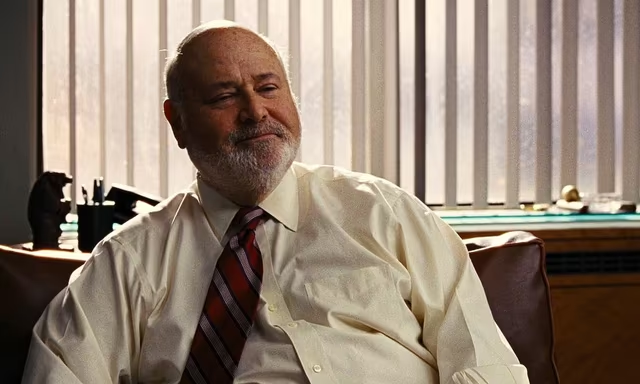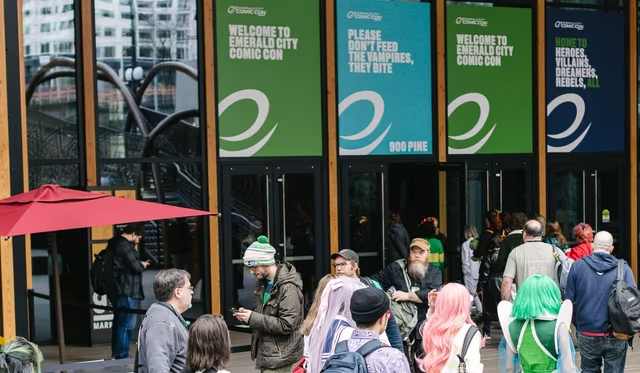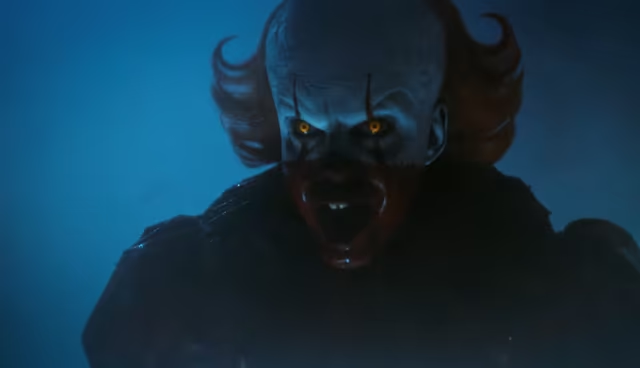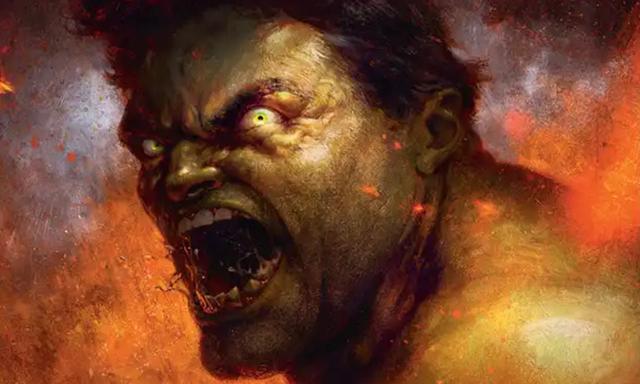If you click on a link and make a purchase we may receive a small commission. Read our editorial policy.
Geoff Johns paints DC's New Golden Age line as a great murder mystery bridging the past, present, and future of DC Omniverse
With DC returning to the Golden Age for a Justice Society of America relaunch, Geoff Johns teases the endless possibilities this celebrated era of the DCU offers fans

The Golden Age of the DC Universe is alive and well, with superheroes first introduced in the ‘30s and ‘40s and their legacies explored in a trio of titles written by Geoff Johns, all set out to roll out this November from DC Comics. Starting with the special one-shot The New Golden Age #1, forgotten sidekicks and lost histories come to the forefront as the Justice Society of America’s legacy is explored across the past, present, and future of the DCU.
The teenage superhero Stargirl takes point in the miniseries Stargirl: The Lost Children, with Johns joined by artist Todd Nauck, as Courtney Whitmore learns more about the tragic history behind some of the DCU’s most obscure sidekicks from the Golden Age. And Helena Wayne, the Huntress and daughter to Batman from another world, embarks on a grand mystery in Justice Society of America #1, with Johns joined by artist Mikel Janín, with the rest of the JSA drawn into this story with sinister stakes. Together, these titles explore different aspects of Justice Society and Golden Age’s continuing impact on the DCU, both in the present and the universe’s far-future.
In an interview with Popverse, Johns talks about returning to write new adventures for the Justice Society and DC’s Golden Age heroes, shares the endless creative and personal appeal of that era of the DCU, and teases what fans can expect from the trio of superhero titles published by DC throughout the month of November.

Popverse: The Justice Society has always been a generational story but those themes are really front and center in The New Golden Age, Stargirl: The Lost Children, and Justice Society of America #1. What was it about having that generational aspect at the forefront of these stories?
Geoff Johns: The thing that’s unique and special about the Justice Society of America, probably the main one for me as a writer, is that generational aspect. I love the history of the Justice Society, that we have these different iterations of the team throughout the last century and beyond, otherwise it’s just a team of superheroes running around.
That generational aspect of carrying on something, like a heroic institution of the past, carrying that on and having it evolve with today’s generation and having today’s generation take control of it and run it and what it evolves into and how it changes for the better and the different challenges it faces throughout the different eras, that’s exciting to me. That’s why I leaned right into the generational aspect of it.
We have several generations in The New Golden Age special and, with Stargirl: The Lost Children, we have today’s generation and a generation of sidekicks that stretches all the way back. We’re examining those too and seeing how the past informs the future and present and how the future and present inform the past.
If I recall correctly, was it the ‘90s Golden Age series that first got you into the Justice Society?
Yeah, James Robinson’s The Golden Age. I loved Roy Thomas’ books when I was growing up, I was reading All-Star Squadron and Infinity Inc. I loved the Mike Parobeck Justice Society of America title that they did but it was really James Robinson’s The Golden Age that made me fall in love with every one of those characters because suddenly James was bringing characters like Captain Triumph on the board and they were interesting. I had never heard of them, I didn’t know who they were, but he found a really compelling and emotional way into the characters.
For me, James’ work on The Golden Age is one of the best – it’s probably my favorite comic book story ever. To me, it’s one of DC’s best stories that they’ve ever published. It should be something that’s on everyone’s list.

What was it about naming the special The New Golden Age and introducing all these new characters and a range of time periods that we hadn’t recently seen the JSA in before?
The whole purpose of this was to expand out the Golden Age because there are characters in there that we have yet to see. There are characters who interact with other generations of heroes that we have yet to see. By going back into some of these obscure heroes and creating new characters to work alongside them, opening up new stories and new details about how they operated and what they did and who they are and why is very exciting.
There are a lot of new concepts introduced in The New Golden Age, that’s why it’s called 'new.' It’s not just about going back to heroes, stories and characters that we already know because we know them. We’re also introducing brand-new characters, concepts, mysteries into the context of the '40s Justice Society of America. Giving that era some mystery and unexplored corners again, that’s exciting to me. It’s not only about introducing new characters and stories today but also going back and introducing new stories and characters that you just haven’t met yet.
What was it about bookending the special with a story set in the 31st century. They make it very clear very quickly that they’re not the Legion of Super-Heroes, they’re the Justice Society.
We’ll see as we go but it’s to introduce the concept that the JSA will continue on. There are a lot of generations that we have not met in DC’s history between now and the 31st century. Justice Society of America #1 takes place 26 years from now, it takes place eight years after The New Golden Age #1.
I always think of the young sidekicks that the Seven Soldiers of Victory had, like Stripesy with the Star-Spangled Kid. What was it about putting the focus on the Legion of Sidekicks for this story?
Because I’m dealing with a lot of adult heroes and characters in JSA and it felt like this nice balance. It felt like Stargirl could be the doorway into this younger generation of Golden Age characters. They’re the first generation of teenage heroes and it’s really interesting to explore that and to look at those characters because there’s a ton of them and we created a whole bunch more. The idea of what a sidekick meant back then is different than what it means now.
We say this in Stargirl but that was when a kid who was lost or troubled or alone or in need of help, a hero would take them under their wing and give them a purpose, a plan, a role, and even empower them and they’d find a place in the world and help out this mentor. Back then, that was the first time anyone did it and it feels more personal to me. The Golden Age of heroes back then feels so much more grounded and personal because their stories took place here and they interacted with one another and their villains with powers but they felt more grounded.
There’s a line in Stargirl #1 that says “Back then, heroes had time to help a kid.” That’s really what it was all about, helping a kid find a place. There were sidekicks all over the place and you don’t really see that so much anymore; you see very few sidekicks, in fact.
They almost died out with Jason Todd.
They almost kind of died out, they don’t really exist anymore. This was a way to explore what it meant emotionally to all these kids and how it helped all these kids. We focus on this one character in particular, Dynamite, who was the sidekick to this obscure character TNT because TNT was the first mentor to die and [explored] how that affected a sidekick, how it affected a kid who just found their place in the world.
With Stargirl: The Lost Children, the reason I separated different generations is because the JSA is all about generations. I had a story to tell with the youngest teenage generation of the Golden Age and today and a story to tell with the JSA proper and the legacy of that team.

We’d be remiss if we didn’t mention the artwork. How is working with Todd Nauck again after the Stargirl: Spring Break Special?
It’s amazing! Todd Nauck’s work on Stargirl: The Lost Children – we’re already on issue #5 – his work is so detailed, kinetic, and emotional. I think it’s the best work he’s ever done and coming up we have these insane double-page spreads and splashes with imagery of all these heroes together fighting to survive; they’re a lot of fun. Introducing these new characters and their personalities is a lot of fun too.
While the series was initially announced with Bryan Hitch, you’re now doing Justice Society of America with Mikel Janín, who you worked with on Flashpoint Beyond. How was it making that shift and working with Mikel again?
Mikel is amazing, his work is just stunning and his Helena Wayne Huntress is just gorgeous. I feel so privileged to have him on the title. Every time a page comes in, it’s a work of art. The scenes that we have between Helena and her mother in issue #1 are amazing, the new characters he’s designed are fantastic. I’m excited for people to see his work in this because they’ve never seen anything like this before.

You’ve written the JSA as far back as the ‘90s with David Goyer and relaunched the Justice Society of America in 2006. How has it been ushering them through these different eras and what makes this relaunch different from your past tenures with the team?
I’ve done a lot of books with heroes like Green Lantern, the Flash, and Aquaman and they’re all great characters and I love them but the JSA is a group of what I feel like are relatively unexplored characters. There’s so much potential and so many stories to still tell and, because of the generational aspect and the history. To me, it’s the ultimate DC comic book and the most fun book to write because you can go anywhere with all of these different characters. You can introduce new characters, bring in minor characters.
It just feels like an endless tapestry of DC history you can play across; past, present, and future. For me, it never feels like there’s no place to go, it always feels like there are things to do and places to explore.
This iteration of the Justice Society of America is incredibly different from the past ones that I’ve done and issue #1 makes that very clear once you read and The Golden Age does. Our main characters introduced in The New Golden Age #1, she then takes over Justice Society of America #1, it’s really her book and story. She’s going to be our lead character taking us through a great mystery – a murder essentially – with the JSA and what’s legacy means to the past, present, and future.
Illustrated and colored by a whole host of artists, The New Golden Age #1 goes on sale Nov. 8. Illustrated by Todd Nauck and colored by Matt Herms, Stargirl: The Lost Children #1 goes on sale Nov. 15. Illustrated by Mikel Janín and colored by Jordie Bellaire, Justice Society of America #1 goes on sale Nov. 22. All three titles are written by Geoff Johns.
Want more? Read our recommended best DC Comics stories.
Follow Popverse for upcoming event coverage and news
Find out how we conduct our review by reading our review policy
Let Popverse be your tour guide through the wilderness of pop culture
Sign in and let us help you find your new favorite thing.
















Comments
Want to join the discussion? Please activate your account first.
Visit Reedpop ID if you need to resend the confirmation email.